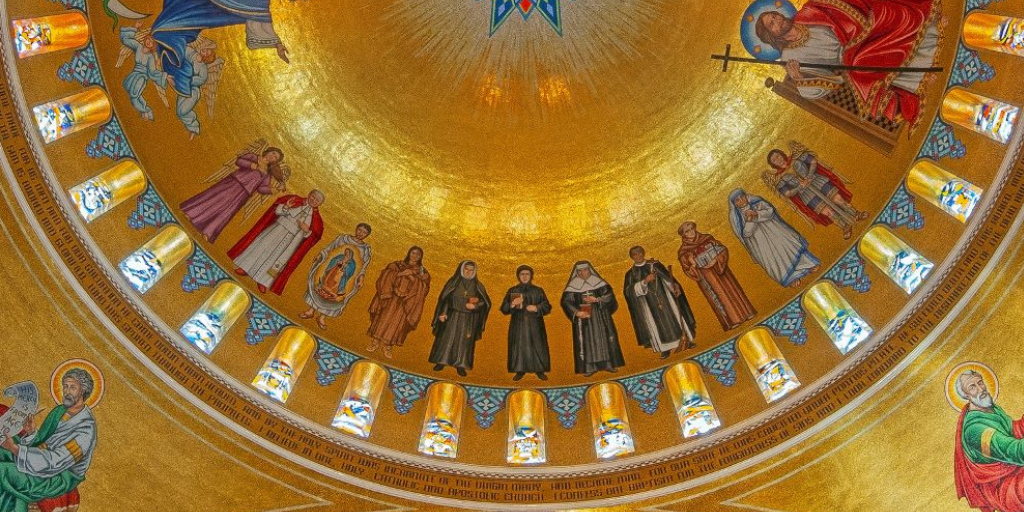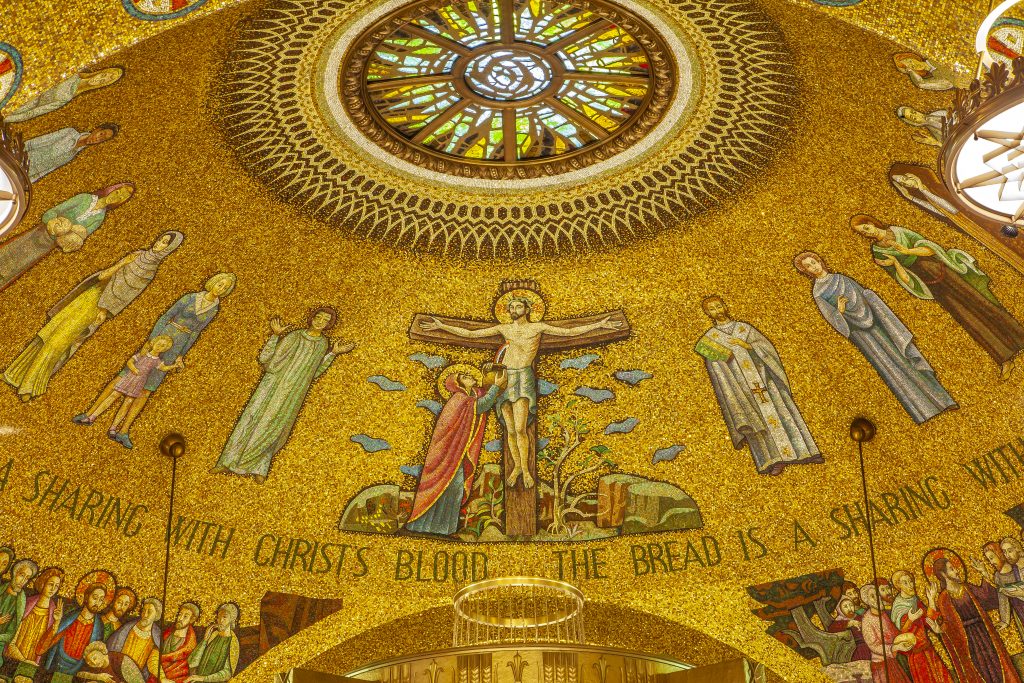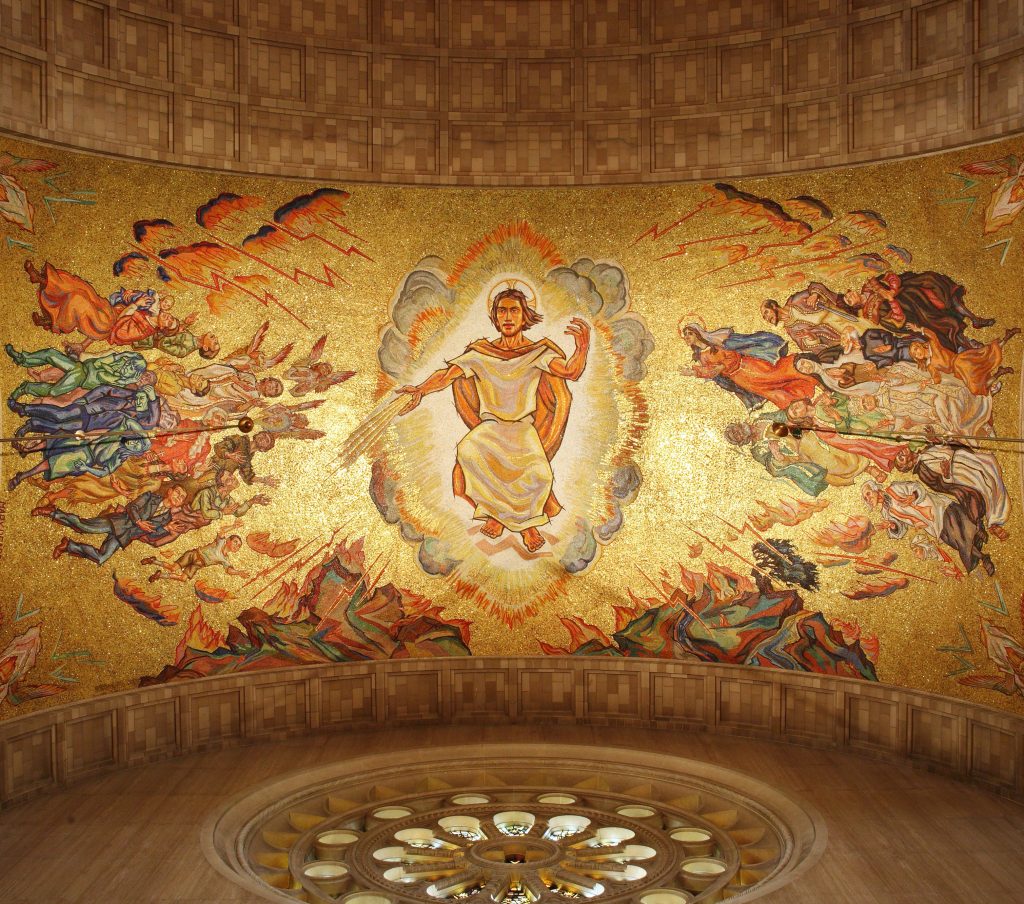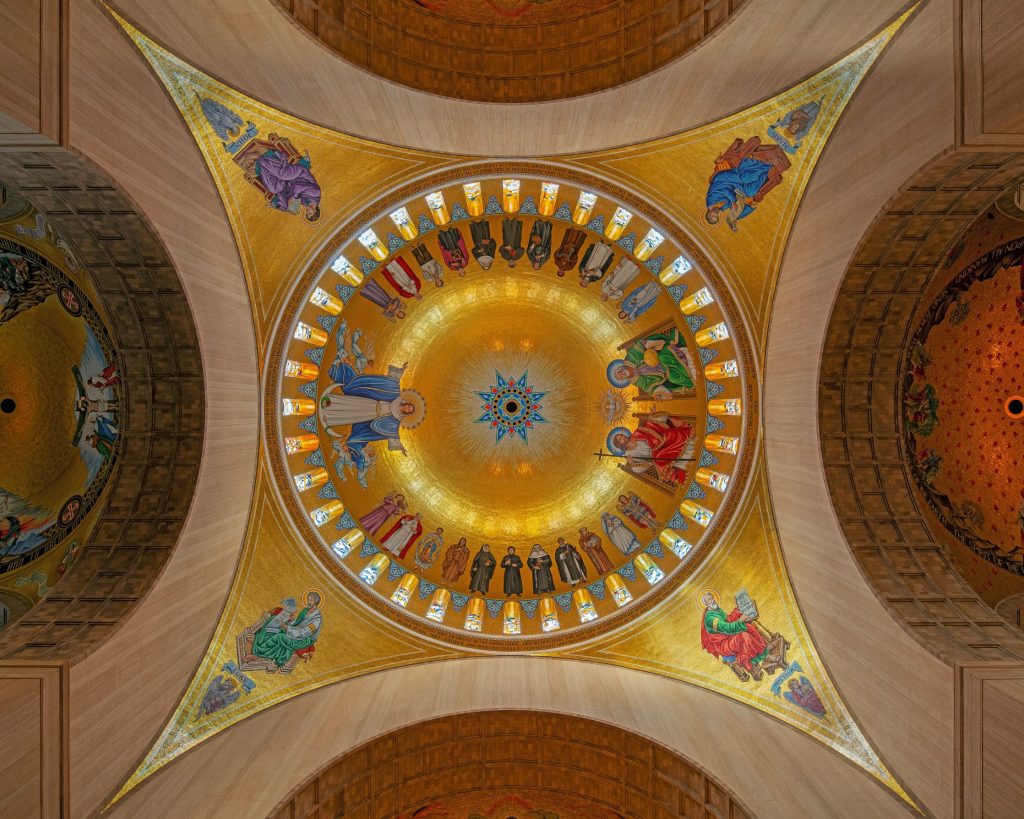
As we prepare our hearts to celebrate All Saints Day at the Basilica, we asked Father Ayala, Director of Liturgy at the Basilica, to answer some common questions about this observance. Learn about the origin of All Saints Day, why Catholics celebrate it, how it is being observed at the Basilica, and more.
What is a saint?
The United States Conference of Catholic Bishops defines saints as “persons in heaven (officially canonized or not), who lived heroically virtuous lives, offered their life for others, or were martyred for the faith, and who are worthy of imitation.”
As I’ve been at the Basilica for over a month now, part of my daily routine is to take a moment to walk around this beautiful National Shrine. If you meander the pathways either outside or inside, you will slowly realize you are surrounded by saints – a beautiful reminder they accompany you on your journey of faith.
Are canonized saints the only men and women commemorated on All Saints Day? If not, who is remembered on this day?

When we pray the Apostles’ Creed, we say, “I believe in…the communion of saints.” The communion of saints is made up of men and women who have placed their hope in Jesus Christ and through Baptism, are his adopted sons and daughters. The communion of saints includes the living and the deceased, whether they are with God in heaven or undergoing a process of purification. Before his death, Saint Dominic said, “Do not weep, for I shall be more useful to you after my death, and I shall help you then more effectively than during my life.” In a very special way, on the Solemnity of All Saints, not only can we pray to our favorite saints, but we can also call upon our departed brothers and sisters whom we believe are already with God.
What is the origin of All Saints Day?
The feast that we know of today as “All Saints Day” originated in May 609, when Pope Boniface IV dedicated the Pantheon in Rome to the Blessed Virgin Mary. In the eighth century, Pope Gregory III changed the date to November 1 when he dedicated a chapel at the Vatican in honor of all the saints, and Pope Gregory IV later extended this celebration of all saints to the universal church.
What traditions and practices are associated with All Saints Day?
One great tradition and practice associated with the Solemnity of All Saints is going to Mass – it is, after all, a Holy Day of Obligation! Every time we go to Mass, we remember the saints in a special way in the Eucharist. Other traditions on this day include reading and learning about the saints, praying to the saints – especially one’s Confirmation Saint – and asking for their intercession so that we, too might become saints. When I was at a parish, I looked forward to school Masses on All Saints when students would dress as saints for the day. Finally, there are some good and wholesome movies about saints – some of my favorite classic movies are A Man for All Seasons, Becket, and The Song of Bernadette.

What is the difference between All Saints Day and All Souls’ Day?
All Saints and All Souls comprise the two-day celebration of the Communion of Saints – those who are with God in heaven and those who are on their way to heaven. On the Solemnity of All Saints, November 1, the Church celebrates those Christians who achieved spiritual maturity. It is a day to venerate all the holy men and women who have been canonized by the Church. A day later, on the Commemoration of All the Faithful Departed (All Souls’ Day), the Church remembers and prays for the faithful departed: our brothers and sisters who have died marked with the sign of faith. Particularly, we pray for all the souls in purgatory.
What are some of the Scriptures or prayers associated with All Saints Day? Is one passage particularly meaningful to you?
The Gospel for the Solemnity of All Saints comes from the Sermon on the Mount – specifically, the Beatitudes, which religious education teaches are the “Basic Attitudes of Christ”! This passage is quite fitting for All Saints because all the saints experienced joy in the midst of sorrow or suffering. Jesus says in the Beatitudes that those who are poor, in mourning, or who are persecuted are blessed.
When we do our best to live out the beatitudes, we contribute to building up the kingdom of God here on earth. On All Saints, we pray in a special way to the saints that they continue to help and guide us along our path of life.
How does the invocation of all the saints assist the faithful in becoming the saints that God has called them to be?

One of my favorite quotations from Saint Teresa of Calcutta is that “holiness is not the luxury of a few people, but a simple duty for you and me.” We are all called to become saints, and we can accomplish that by striving to follow God’s commands and being united with Him in love. To be holy, to be a saint, means allowing God “to live his life in us” as Mother Teresa taught.
How is All Saints Day observed at the Basilica?
All Saints Day is observed at the Basilica with Masses being celebrated throughout the day. The 12:10pm Mass will be celebrated by Most Reverend Paul Loverde, Bishop Emeritus of the Diocese of Arlington, and will be livestreamed at nationalshrine.org/mass and on our social media platforms, as well as televised on EWTN. The celebration of saints continues throughout the year at the National Shrine as we celebrate the Feasts and Memorials of saints at our daily Masses.

